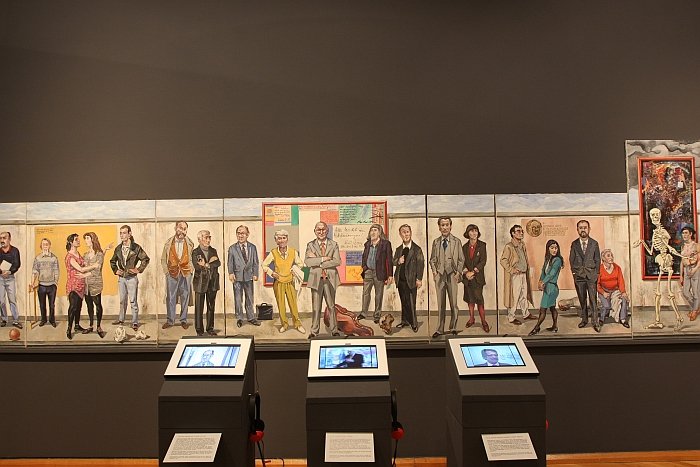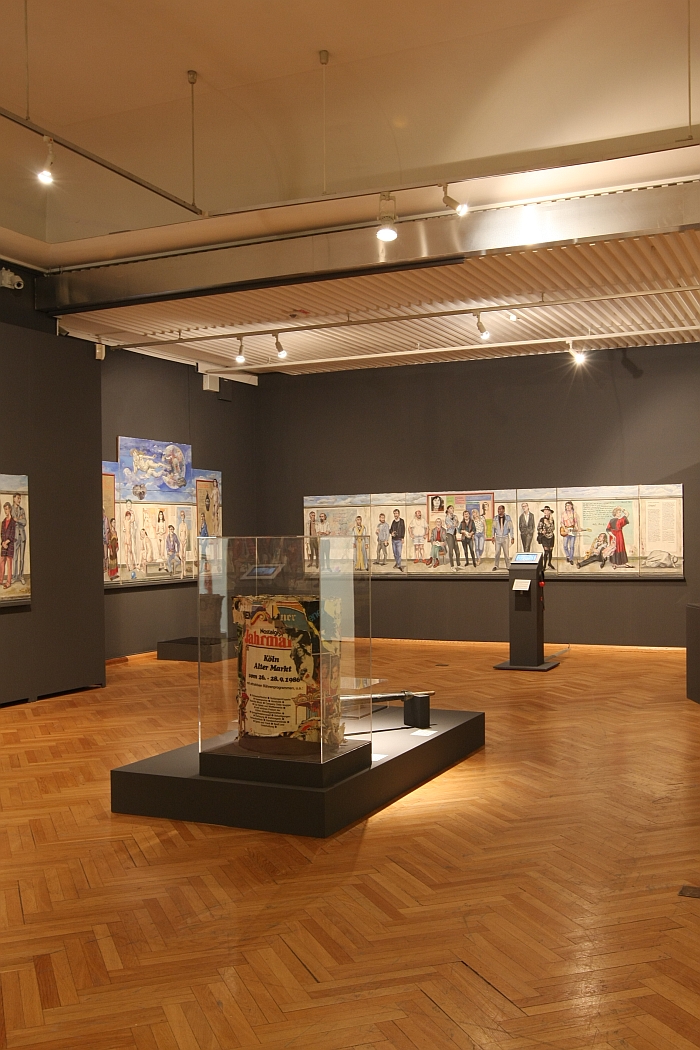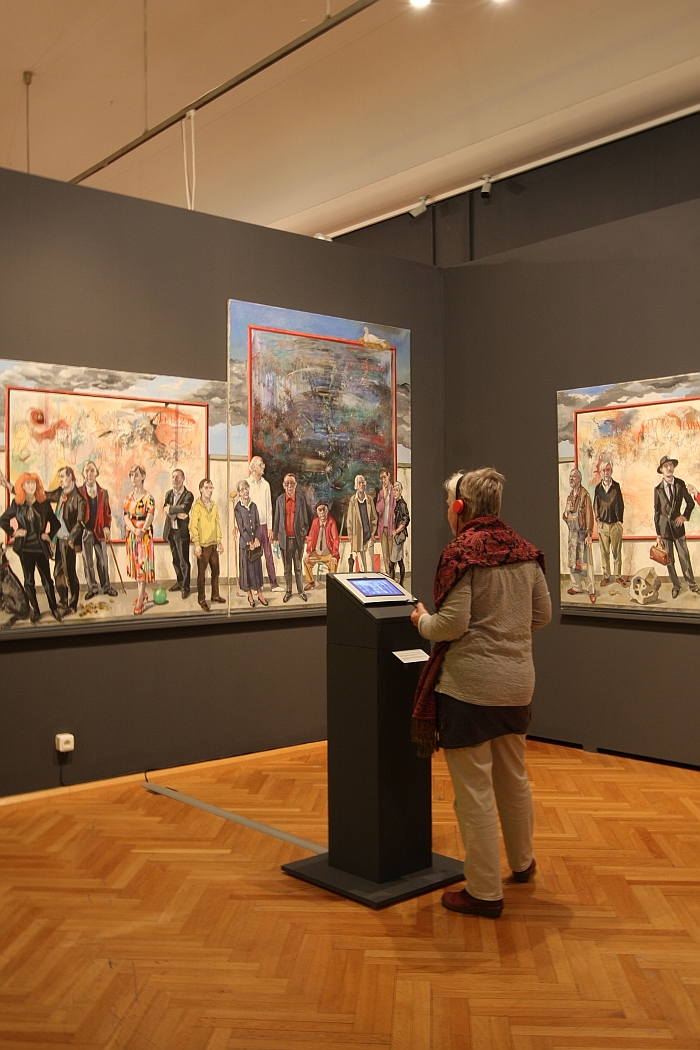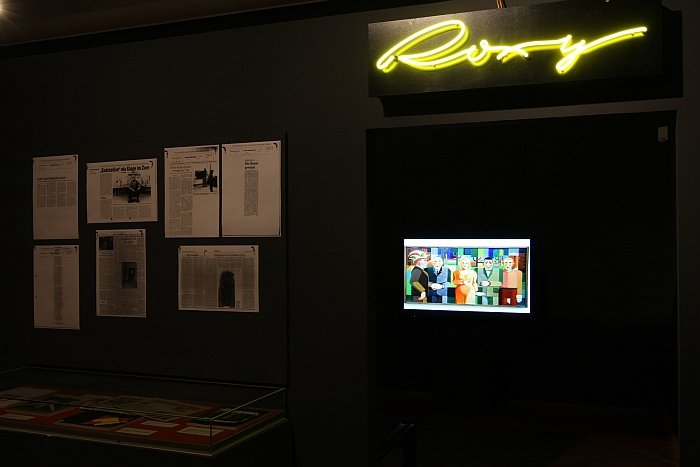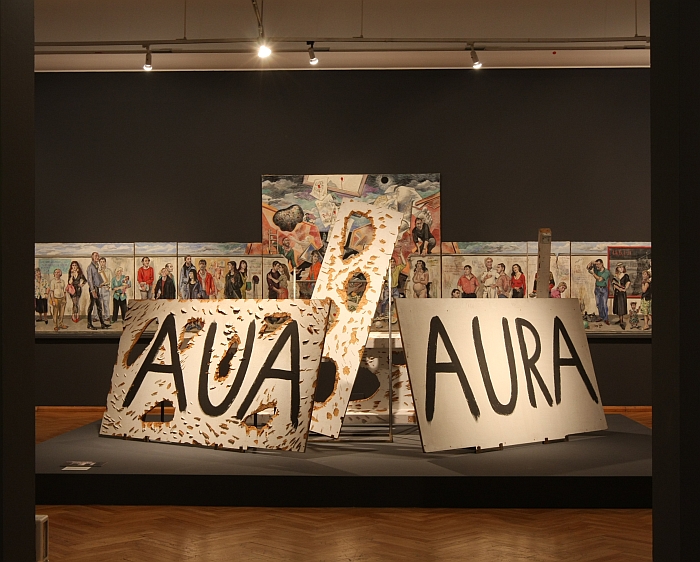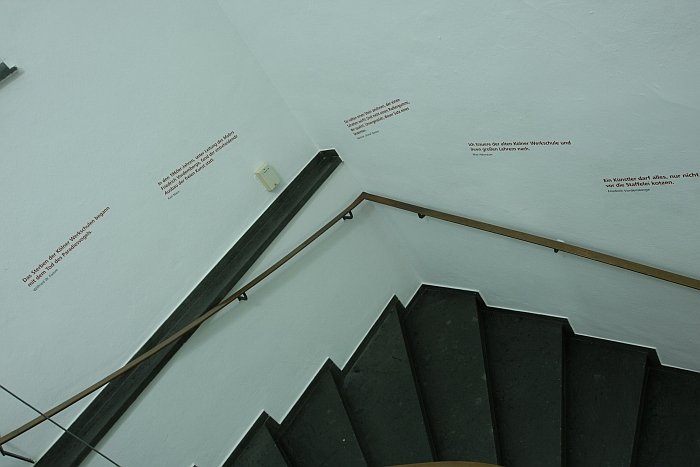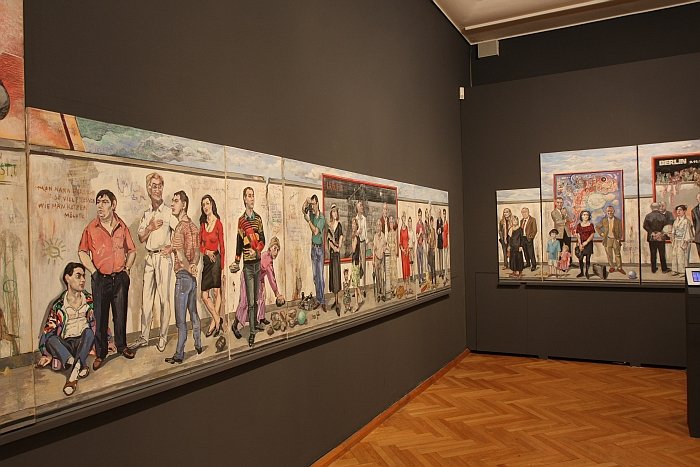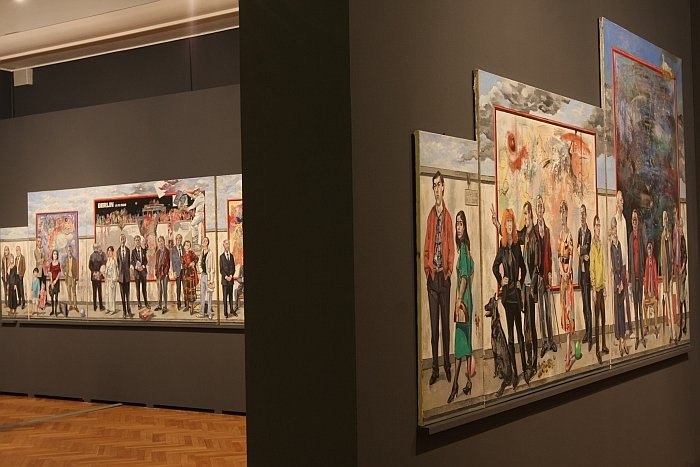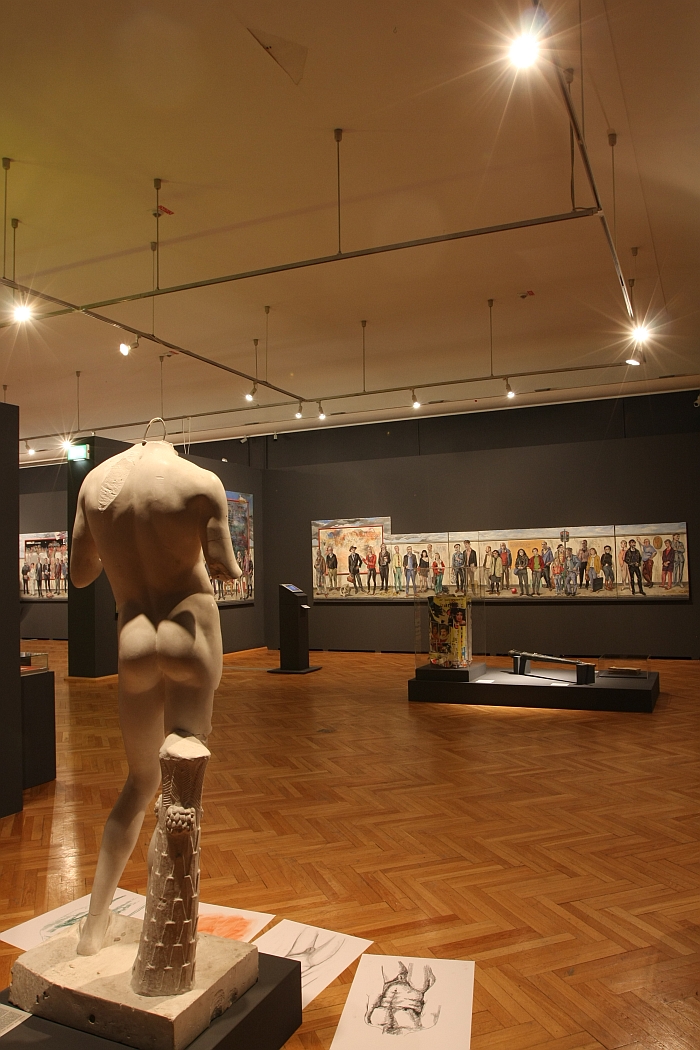When is a terminus not an end station?
When it is the exhibition Endstation Ubierring 40 - Terminus Ubierring 40 - at the Kölnisches Stadtmuseum, Cologne.
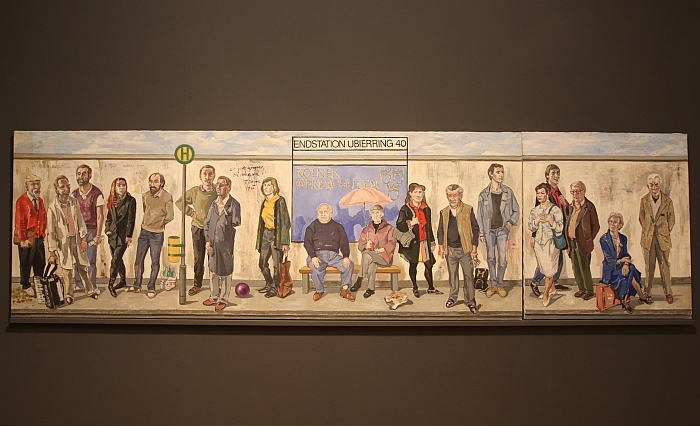
On March 31st 1993 the Art Department at Cologne Fachhochschule, the city's university of applied sciences and arts, closed, the final act in a process which, effectively, began in 1971 with the merging of the Kölner Werkschulen art and craft college with the Fachhochschule.
Tracing its history back to 1879 the Kölner Werkschulen rapidly progressed from an applied arts institution into an applied and pure arts college which also crossed over into areas such as architecture and design. Originally sited in a former school building near St. Kolumba church the Kölner Werkschulen moved in 1924 to purpose built facilities at Ubierring 40, and over the years could count the likes of Martin Elsaesser, Richard Riemerschmid and Stefan Wewerka amongst its teaching staff. In 1986 the State Government in Nordrhein-Westfalen decided to establish a new art academy in Münster, much to the displeasure of the authorities in Cologne and staff and students at the Werkschulen who had never given up the hope of extricating the art department from the Fachhochschule and establishing an art academy in Cologne. By way of a compromise the State Government also announced their intention to strengthen and promote design education in Cologne, including reintroducing the product design course at the Fachhochschule. In 1987, and as an inevitable consequence of the previous decades evolution, the decision to close the art department in Cologne was confirmed, the admission of new students stopped and thus 114 years of art education in the city came to an end.
Obviously as artists were involved the closure was anything but quiet. But irreversible none the less.
Although ostensibly a celebration of the Kölner Werkschulen Endstation Ubierring 40 is also the start of an academic study of the institute, its traditions, its impact and resonance and, ultimately, to the question, what was lost when the Kölner Werkschulen closed?
A terminus as in where a journey begins as much as in where it ends.
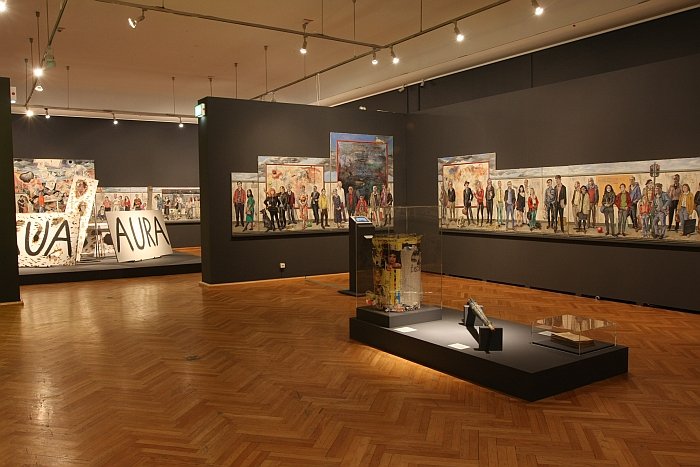
The central feature of the exhibition Endstation Ubierring 40 is the 46,5 metre long mural Endstation Ubierring 40 by Hans Rolf Maria Koller and which depicts Kölner Werkschulen students and professors anno 1991/1992 and thus serves as a final testament of and to the Kölner Werkschulen.
A central feature which in its presentation is also the major weakness of the exhibition.
Although, we presume, not intended exclusively for a specialist Cologne public, viewing Endstation Ubierring 40 does require an excellent working knowledge of the Cologne art scene in the later half of the 20th century.
An accompanying brochure identifies who's who in the mural, but there is no biographical information and so if the names mean nothing to you.... you might as well be viewing depictions of the 1978 Peruvian World Cup Squad for all the difference it makes.
Yes, one can appreciate the quality of the work, can make a good stab at understanding the in jokes obviously contained within and comprehend from the passion that emanates from the mural the very real affection that went into creating it and which by extrapolation was obviously felt for the Kölner Werkschulen. But the exhibition isn't supposed to be about Hans Rolf Maria Koller's artistic talents rather celebrating the art school and asking if something was lost when the art department closed.
Those with a good knowledge of the Cologne art scene, or who were part of the Kölner Werkschulen, will know most of the faces, be aware of their relevance and importance and thus be able to reflect on the question of what was lost when the art department closed.
For the rest of us the answer to that question is hidden behind the unfamiliar faces, the lack of biographical information making the exhibition a lot less accessible. And so by extension a lot less rewarding.
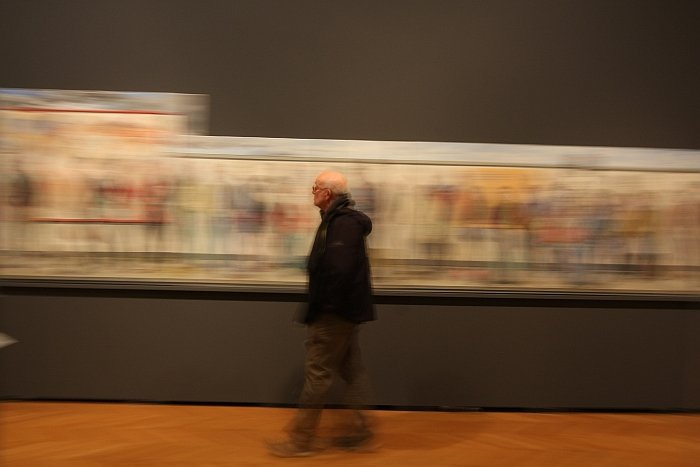
Complimenting Hans Rolf Maria Koller's mural Endstation Ubierring 40 also features objects salvaged from the Werkschulen, a multi-medial presentation of the multi-media reaction to the closure and a small section on those works from Kölner Werkschulen alumni which can be found in public places around Cologne, including, amongst others, stained glass windows by Johan Thorn Prikker, the Icarus figure on the wall of the Friedrich Wilhelm Gymnasium by Kurt-Wolf von Borries and the Rheingarten fountain by Eduardo Paolozzi: and which is for us the most relevant section of the exhibition, not least because walking around and through Endstation Ubierring 40 we constantly found ourselves asking, does it matter to a city if an art school closes?
Does it? Really?
Yes there is the loss of civic pride, and of course the art students who are not only an economic factor but also, can, potentially, influence and contribute to the development of other creative industries in a city, be that music, theatre, architecture or design; however as we all know from the Kölner DESIGN Preis, Cologne has 7 creative colleges, several of which grew out of departments at the Kölner Werkschulen. For us the more important point in the discussion is the position and importance art is given by a city council. Is Cologne a city which promotes art? Is Cologne a city which nurtures artists? Is Cologne a city where artists can live and work? Is Cologne a city which commissions art? If it is, it is surely irrelevant if the city hosts an art school or not, a discourse is taking place. If art has no importance to the city authorities, what does an art school bring, other than the aforementioned civic pride?
In addition the demise of the Kölner Werkschulen and the subsequent refocussing of priorities has allowed the Köln International School of Design, KISD, to develop as it has. Is that not something to celebrate rather than lamenting the passing of the Werkschulen?
A terminus as an interchange from a where the journey continues in another direction and with another vehicle.
As a former Kölner Werkschulen student who now leads the KISD Wolfgang Laubersheimer's views on the matter would certainly be relevant and interesting. Sadly when we interviewed Wolfgang Laubersheimer we didn't know the exhibition was coming, had we, we would have asked. We hope someone does.
And it is not just Wolfgang Laubersheimer whose opinion is wished for.
Endstation Ubierring 40 ends with an affirmation of its desire to be the start of a wider dialogue and academic research on the Kölner Werkschulen, its students, staff and legacy.
A dialogue and research that we expect to result in a more fulminate exhibition and one which doesn't just allow insiders to celebrate the Kölner Werkschulen but which allows all to understand the role the school played in the cultural development of Cologne, in how far the Kölner Werkschulen had a relevance outwith the city boundaries and if it matters to city if an art school closes.
Endstation Ubierring 40 can be viewed at the Kölnisches Stadtmuseum, Zeughausstraße 1–3, 50667 Cologne until Sunday April 24th.
Full details, including information on the accompanying fringe programme can be found at www.museenkoeln.de



